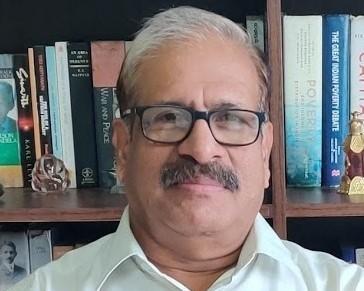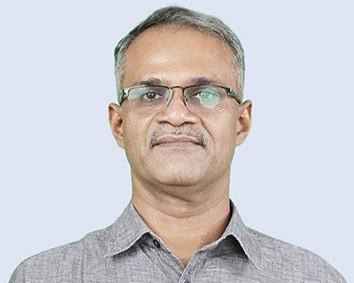At a time when the economics of agriculture has been ousted from the economics curricula in India, it is heartening to see agrarian issues occupying a central position in recent books of fiction. In this blog, I review Kota Neelima’s Death of a Moneylender (2016, Penguin, Gurgaon). Neelima’s book conveys the condition of Indian farmers through the eyes of Falak Anand, a newspaper reporter from Delhi, who goes to Bapat — a small village in south-central India — to report on the death of a moneylender, Desraj. The concerns of village residents are perceptively brought out through his conversations with three people: an old economist who sits near him on his train journey to Bapat; Shambu, a farmer; and Laxmana, the head of the village (sarpanch) and a moneylender.

The Village Economy
Our understanding of the village economy cannot be a simple departure from the perfectly competitive markets found in microeconomics textbooks. It requires a social understanding of the division of space, the division of labourers, the division of property, and the access to education and health. Neelima’s book touches on the issues of spatial inequality and briefly on the inequality of access to education. The following excerpts indicate the embodiment of economic and social inequality in space.
It was observed that the victim [Desraj] was hanging from a lamp post … we have these new, stylish lamp posts only on Tank Road in the village. That is where the important people live. (p. 56)
Tank Road…was on the only paved street of the village. Desraj’s was one of the few double-storeyed buildings on the street … Falak realized even rainwater did not accumulate outside these houses. (p. 71)
Madhav’s [a poor and indebted farmer] house … was in the middle of a series of huts in one corner of the village, quite a distance away from the better households (p. 167)
And the poorer farmers had no option but to own/rent land which was constantly at the risk of flooding (p. 79).
In short, the location of houses and farms of poor farmers was poor.
Turning to educational inequality, we find that Desraj’s son, Bhanu, has completed a postgraduate degree in finance and management, while Madhav, a farmer, is unable to send his children to school.
The Centrality of Land
Land, a ‘factor of production’ in neoclassical economics, cannot be seen on par with labour and capital because its ownership embodies economic as well as social power unlike the other two factors. A satisfactory study of not only land but also labour must be embedded in their social and historical contexts. Neelima’s Death of a Moneylender includes a telling discussion on the buying and selling of land. Who are the sellers of land?
Chella [a farmer] … had cultivated cotton for almost a decade, one of the first farmers to use the new genetically modified seeds. Over the decade his debt amounted to such amounts that he realized he could not pay back without pledging his land. He was so desperate that we feared for his life. But instead of suicide, he sold his land and paid the debts. (p. 90)
And who are the buyers of land?
Apart from Biddi [brother of a local MLA], there are also other buyers. These powerful people in collusion with the moneylenders harass us [farmers] and make us sell our lands. Most of our lands next to the road were sold like this. They are now with rich men from Kharanji [the closest town from Bapat] and the state capital. (p. 90)
Through such land transactions (often for speculative purposes and not cultivation), the wealthy get wealthier, and semi-landed farmers become tenant farmers. It is Parvati, the wife of Madhav, now a domestic worker, who tells Falak about the importance of owning land: “There is dignity in tilling our own land. But in doing chores…” (p. 171). Unlike in academic writing where silences are disallowed, the silences found in good fiction say a lot.
On Interlinked Agricultural Input Markets
Mainstream economics assumes the market for seeds to be independent of the market for pesticides and likewise for other inputs, and in each of these markets, rational buyers interact with sellers to arrive at equilibrium prices and quantities. This unreal conception was challenged by the seminal contributions of Bhaduri (1973), Bharadwaj (1974), and Raj (1975) wherein they introduced the idea of interlinked or interlocked input markets in Indian agriculture.
In Neelima’s book, some of these interlinkages are captured in the conversation between Falak and Shambu, a poor farmer.
Biddi or Brihadeshwar is the biggest landlord of this district. The elder brother is the local MLA, the younger owns large lands in many villages … but does not grow anything.
Falak said, ‘Why does he own so much land then?
…
It is the mortgaged land of poor farmers. Moneylenders usually keep land papers as security before giving loans. When farmers are unable to pay back the loans for many years, they lose the land to the moneylenders. Very few moneylenders do cultivating themselves.’ (p. 88)
In another conversation Falak has with a cotton mill owner, the collusion between the mill owner, input suppliers, and marketing agents is rendered visible.
‘I just have to “manage” the market agents. If the marketing committee official decides that the farmer’s cotton is second or third grade, I get first grade cotton at third grade prices. The farmer could also bribe the right man and get a first grade certification. But the farmer usually does not even have the money to pay the transporter who gets the harvest to the market.’ (p. 137)
…
‘Or I can locate traders who lend seeds, fertilizers, pesticides and farm implements to the farmers after pledging their produce. I could support the trader and make sure I get the produce at a much lower rate, usually at the government’s minimum support price. It is set as a benchmark to make sure the prices do not fall lower, but we know how to use it otherwise.’ (p. 138)
With such interlinking of markets, the market price is unjust. (In this context, it might be interesting to review the idea of “just price” found in the work of Thomas Aquinas and the notion of “proper price” in the Arthashastra.) The reality is that poor farmers in India are, to use a textbook term, “price takers” while the moneylenders and traders are the “price makers.”
The Nature and Extent of Uncertainty in Agriculture
In the eighteenth century, Richard Cantillon recognized the uncertainty associated with farming and distinguished entrepreneur-farmers from those who earned a fixed income and those who owned land. Majority of Indian farmers are heavily dependent on rain for their cultivation and extreme weather events wreak havoc on crops and farmers. As Shambu says to Falak, “There are many reasons which weaken a farmer. Just look at this rain. One bad crop, many unpaid debts.” (p. 254)
Besides the uncertain arrival, departure, and volume of rains, the farmer also faces uncertainty in terms of price for his produce. On the other hand, the Indian farmer is faced with several certainties: the certainty of debt repayment, the certainty of lack of storage facilities, the certainty of collusion by moneylenders, seed and pesticide dealers, and market agents. When all the certainties and uncertainties are put together, the precarity of the Indian farmer is an inescapable fact.
Fact as Fiction
The realities of Indian agriculture should enter the economics curriculum at undergraduate and postgraduate levels in India. Is mainstream microeconomics and macroeconomics equipped to deal with the nature of the Indian agricultural sector? As K. N. Raj said, about the application of general equilibrium to the Indian economy,
“…their uncritical use without paying adequate attention to these vital features of agrarian economies is still unfortunately all too common today, concealing a great deal of superficiality behind a facade of theoretical elegance and sophistication.” (Raj 1990, p. 87)
It is unusual to make demands on books of fiction but since less-than-adequate attention is given to agrarian issues by mainstream academics and journalists, it is perhaps justified. The first gap in the book is an absence of discussion of caste. Secondly, there is no clear distinction between the socioeconomic status of an agricultural labourer and a tenant farmer. Nevertheless, Death of a Moneylender can be effectively used in courses dealing with development economics, agricultural economics, and Indian economy.
Further Reading
Bhaduri, A. (1973), ‘A Study in Agricultural Backwardness under Semi-Feudalism’, Economic Journal 83(329): 120–137.
Bharadwaj, K. (1974), Production Conditions in Indian Agriculture: A Study Based on Farm Management Surveys, London: Cambridge University Press.
Raj, K. N. (1975), ‘Agricultural Development and Distribution of Landholding’, Indian Journal of Agricultural Economics 30(1): 1–13.
Raj, K. N. (1990) Organizational Issues in Indian Agriculture, New Delhi: Oxford University Press.
Alex M. Thomas is Assistant Professor of Economics, Azim Premji University.
About the author
Alex M. Thomas is with the School of Arts and Sciences, Azim Premji University, Bengaluru.
















































































